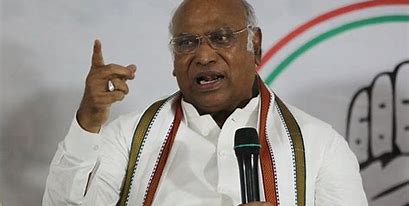As the India-USA Commercial Dialogue gets underway in Delhi — after a hiatus of three years – with the visit of the US Secretary of Commerce Gina Raimondo to India between 7-10 March, much is visibly at stake to take forward the discussions on cooperation in various sectors that could unlock new trade and investment opportunities between the two countries. Raimondo who is visiting New Delhi on the invitation of Commerce and Industry Minister Piyush Goyal, will also participate in the CEO Forum which was soft-launched by the two ministers on 9th November 2022 via video-conference, with thrust on increasing supply chain resilience, enhancing energy security and reducing overall greenhouse gas emissions, advancing inclusive digital trade and facilitating post-pandemic economic recovery, especially for small businesses.
“This is an optimistic time for US-India relations, and I am excited to visit India during such a special time of year, the celebration of Holi,” a US embassy press statement quoted Raimondo as saying ahead of the India visit. “Through the CEO Forum, the Commercial Dialogue and IPEF, we are making excellent progress in bringing our countries closer together by creating new markets for trade, expanding those that already exist,” Raimondo said.
As the two democracies look to furthering trade and commercial ties between the two countries, the exercise will be shaped against tectonic shifts in the global and geopolitical landscape since the last India-USA Commercial Dialogue was held in February 2019 as a cooperative undertaking encompassing regular government-to-government meetings to be held in conjunction with private sector meetings with an aim to facilitate trade and maximize investment opportunities across a broad range of economic sectors. Since then a pandemic and the Russia-Ukraine conflict have ravaged the global social, political and economic systems, trade and businesses and a belligerent China has also pushed infrastructure, digital trade, green technology and supply chain resilience as the core agenda of India-US cooperation in the US Indo-Pacific Economic Framework (IPEF) launched in May 2022 with India as one of the partners.
Now with India holding the G20 presidency in 2023, the proposed re-launch of the Commercial Dialogue will likely have New Delhi and the US directing efforts towards further intensifying to achieve global growth objectives that are inclusive, sustainable, centered on critical and emerging technologies, resilient supply chains and climate action. On a more favourable note, the Commercial Dialogue comes at a time when the triumvirate of trade, business and economy have deepened their prominence in the matrix of India-US multifaceted relations. The year 2023 kicked off with the successful conclusion of the 13th Ministerial Meeting of the India-US Trade Policy Forum (TPF) which will serve as a key vehicle to enhance the bilateral economic relationship.
A closer look at the “2023 Trade Policy Agenda and 2022 Annual Report of the President of the United States on the Trade Agreements Program” released by the office of the United States Trade Representative on 1 March 2023 and a copy of which is with the Daily Guardian, underlines the “dynamic and important trade and investment relationship that India the United States share” and the discussions at the 13th meeting of the TPF in Washington on the “tremendous potential for growth between our economies and how we can work together to bring a positive impact to working people in both countries”. The 2023 Trade Policy Agenda assures that “the United States will continue to partner with India to tackle shared challenges, build resilient supply chains, and promote a transparent, rules-based trading system for market economies and democracies”.
This would be a natural corollary to India climbing to the slot of the ninth largest trading partner for the US while the latter is India’s largest trading partner and the largest export destination. Bilateral trade in goods saw robust growth during calender year 2022, surpassing USD 131 billion in goods and doubling over 8 years since 2014 to push the total bilateral trade in goods and services to about USD 160 billion in 2021. This trade in goods and services is expected to cross USD 180 billion. The bilateral trade between India and the USA stood at US$ 87,342 million from April to November 2022. The USA is the 3rd largest investor in India with cumulative FDI inflows of USD 56,753 million from April 2000 to September 2022. Many US. companies view India as a critical market and have expanded their operations. Likewise, Indian companies seek to increase their presence in the US markets and at the end of 2020, Indian investment in the USA totalled USD 12.7 billion, supporting over 70,000 American jobs.
While India’s principle commodities export to the US are precious and semi-precious stones, drugs and pharmaceuticals, petroleum products, cotton fabrics, garments, marine products, iron and steel products, electrical equipment and auto components, several factors like a high consumption-driven growth in US, pent-up demand for items such as jeweller and electronics, diversification of supply chains by companies, etc have contributed to an accelerated trend in such exports. Electronic component companies, too, have moved production to India. For example, Apple now exports a million smartphones from India to the US every month.
Going forward, as agricultural powerhouses, the US and India can together chart a course for funding mechanisms and global supply of foodgrain to augment the efforts of the World Food Programme and the Food and Agriculture Organisation to prevent the escalating crisis in Ukraine from causing global food insecurity.






